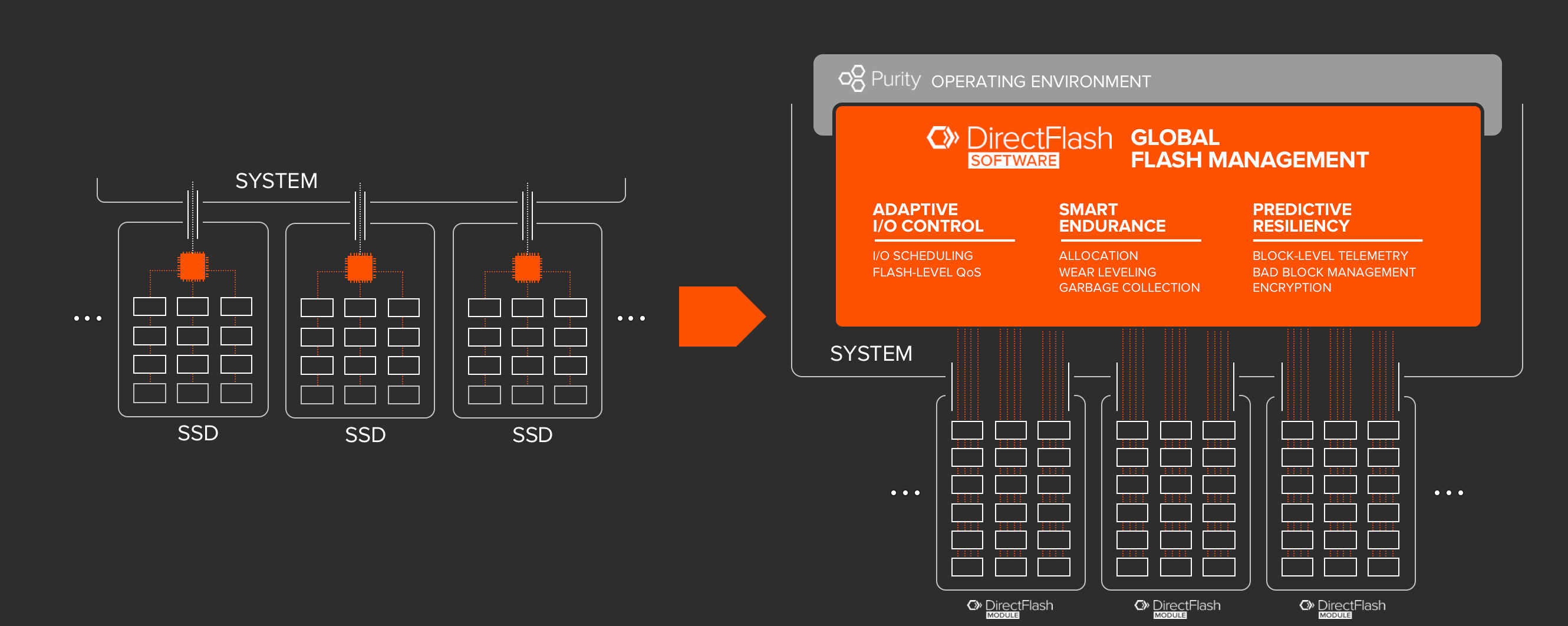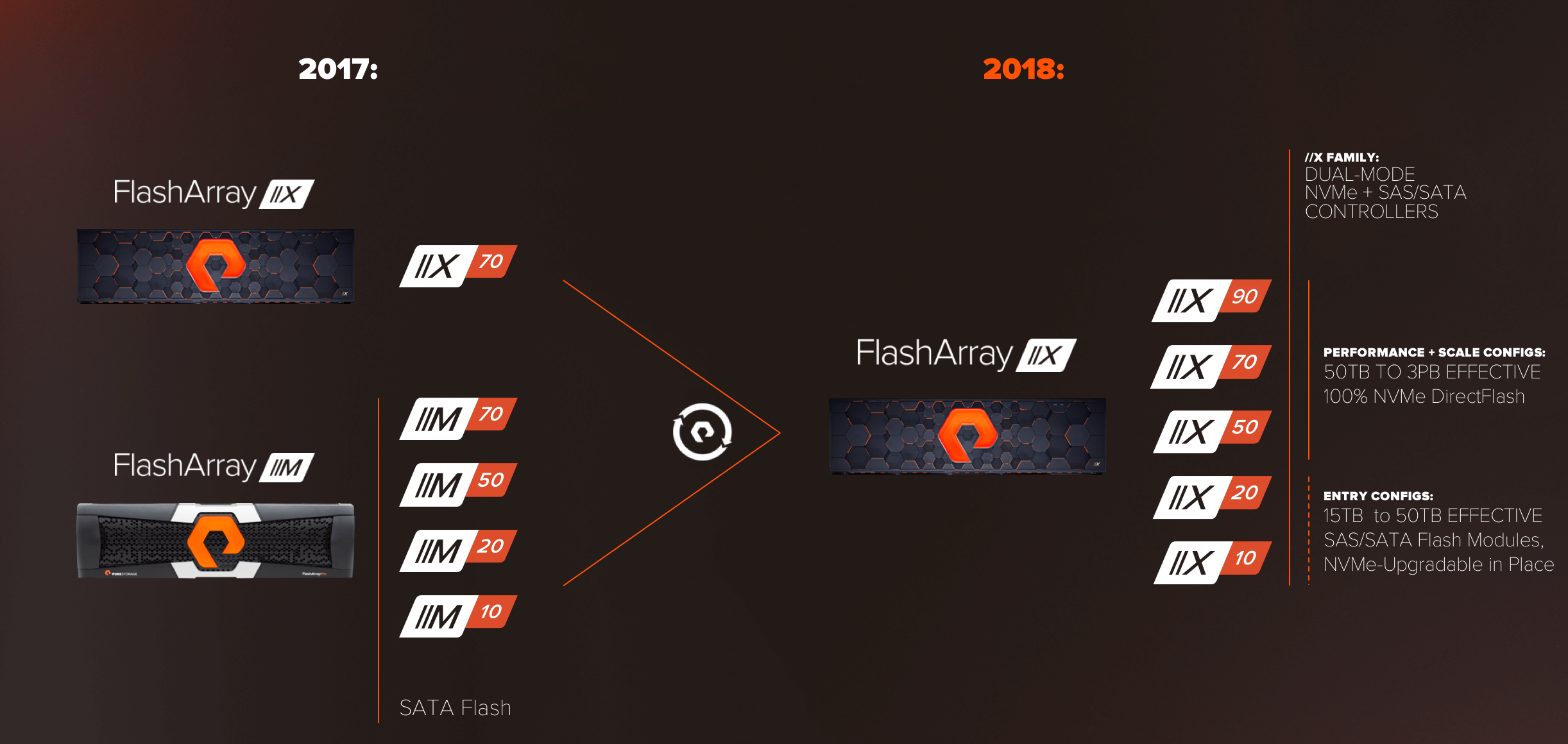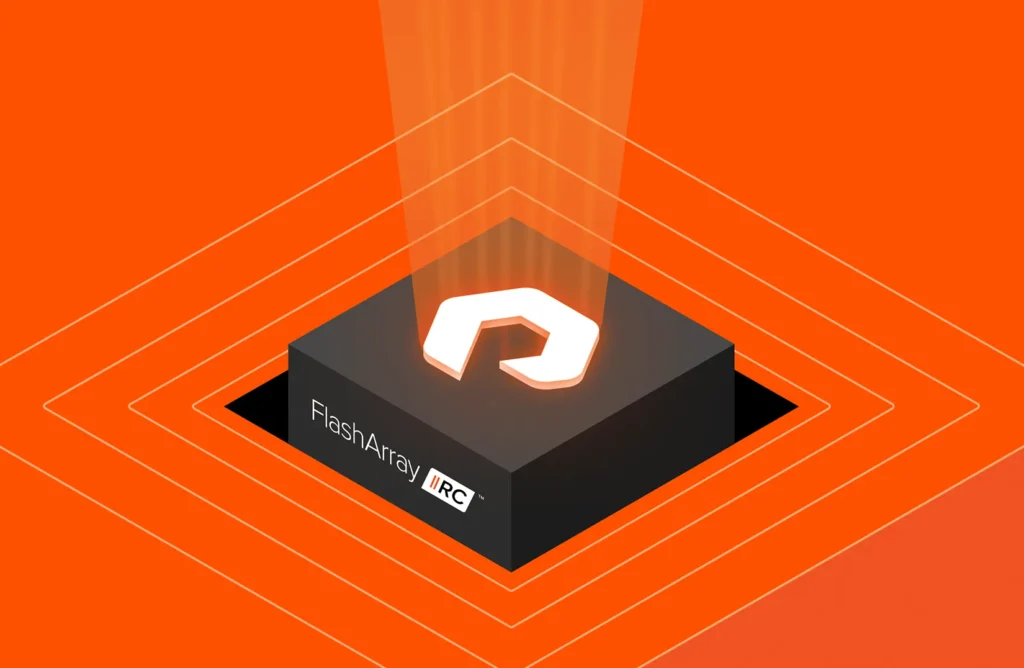Pure’s new FlashArray//X R2 family and the DirectFlashTM Shelf are based on a new, next generation architecture with DirectFlash, NVMe and NVMe-oF. Media technologies are constantly changing and allow us to optimize for economics and performance (MLC, TLC, QLC and emerging low-latency media). Compute, memory and network technologies are also changing, but at distinctly different rates. Meanwhile, useful data should always remain available.

As data grows at an exponential rate and application architectures modernize, customers are are always looking at how new technologies can help to support their changing business requirements. The challenge is to allow customers to leverage existing investments and to avoid data migrations and forklift upgrades. At Pure, we strive to design for new technology transitions that customers can adopt in-place and non-disruptively, as needs and capabilities adjust.
We like to think that “the data is the array”, while the hardware (and software) will come and go. Transitions are not an afterthought – we must design for non-disruptive transitions from the beginning. We have done this for seven generations of FlashArray. In fact, while NVMe and NVMe-oF is new to others in the market, Pure is now on our 4th generation of product with NVMe, starting from the FlashArray//M, which used NVMe within the array.

The Purity Operating Environment software has been designed to enable flexibility from the start. The metadata architecture allows for changes that we may not anticipate – we just know that the future doesn’t look like the past – and allowing for changes without disruption is critical. Because flash is an essential element for storage resiliency, performance, and economics, the DirectFlash architecture also accommodates differences in flash generations. This enables an existing array to integrate new media, and new arrays to start fresh with the optimal balance of performance and cost. As the landscape of persistent media continues to shift, with QLC and low-latency media emerging, the advantage of DirectFlash becomes even more clear.

Networks evolve along with the media and other components of the system. This is true for internal (or “back end”) networks such as SAS and NVMe, as well as client networks such as Fibre Channel, iSCSI, and NVMe-oF. To accommodate changing networks in a long-lived hardware platform such as the FlashArray family is a challenge. Our strategy in the back end started all the way back in 2013, during the design of the FlashArray//M product line. At the time, we recognized the value that NVMe could bring, but the technology was new and support for SSDs was not broad. Meanwhile, we had a robust SAS implementation and a wide variety of SAS and SATA SSDs to optimize between performance and cost. So we chose to build in NVMe support alongside SAS support, which has allowed us to bring in NVMe once the technology was ready. We also decided not to wait for the industry, and we developed the world’s first dual-ported hot-pluggable NVMe device with our NVRAMs. That addressed a critical resiliency and performance issue, and gave us essential experience in the deeper aspects of NVMe – particularly robust hot plug support and performance optimization.
Now, the new family of FlashArray//X products discards these compromises. Every controller in the new line supports both NVMe and SAS, so that any model* can support any media type. This provides investment protection for those who want to leverage prior SAS investments as well as upgradeability and full performance when a customer needs it. Of course, this is all happening in the original //M chassis that have been operating without disruption for years.

The story continues with our backend fabric. The new performance and scale configs (//X50, //X70 and //X90) support existing SAS shelves and our traditional Flash Modules, along with the new DirectFlash Shelf. The DirectFlash Shelf enables systems to achieve full capacity with 100% DirectFlash NVMe modules, for the best system performance. In fact, the new flagship //X90 system can now support up to 3PB of effective capacity with a single DirectFlash Shelf in a total of 6U.

In the front end, NVMe-oF is disrupting traditional DAS infrastructure. With lower latency, higher throughput, increased parallelism, and CPU offload, NVMe-oF allows a convergence of DAS and SAN resulting in what Gartner has coined as Shared Accelerated Storage. The simplicity, performance, and economics of the FlashArray family now apply to the entire datacenter storage requirement, allowing for flexibility in the network, compute, and application tiers.
By this point, you can see the pattern emerging. The only constant in technology is change, and a thoughtful strategy for evolving in pace is the only way to keep up.
To learn more about the benefits of FlashArray//X, DirectFlash / NVMe and NVMe-oF, check out these Accelerate 2018 launch blogs.
- Introducing the New FlashArray//X Family: Shared Accelerated Storage for Every Workload
- Non-Disruptive Upgrades: FlashArray//M to //X with NVMe
- A New Era of Storage with NVMe & NVMe-oF
- FlashArray//X Sets New Bar for Oracle Performance
- New FlashArray//X Drives Application Acceleration for SAP HANA
- FlashArray//X Drives Application Performance for Epic
- Make Your Resume Even More Compelling with FlashStack™
*Entry level //X10 and //X20 are optimized for lowest total system cost, so they come configured with SAS/SATA flash modules. These controllers are capable of accepting DirectFlash Modules for expansion over time, as we expect to support smaller DirectFlash Data Packs in the future.

Free Test Drive
Try FlashArray
Explore our unified block and file storage platform.






